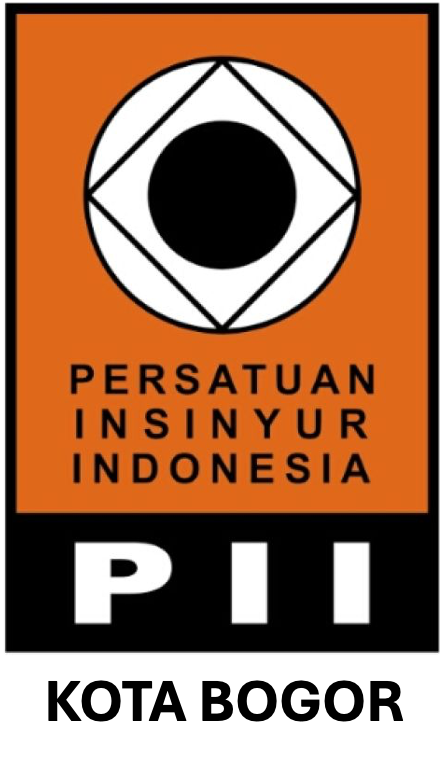Crack Propagation Observation Using Digital Image Correlation (DIC) on Oil Palm Shell (OPS) Reinforced Concrete Beam
Abstract
In terms of disaster risk management, crack opening and behaviour of structural elements should be predicted to prevent severe risk after the failure. To do so, structure responses, and crack propagation phenomena of concrete structural elements should be understood. Opening, re-closing, or re-opening of cracks in concrete may occur under some circumstances. Capturing the behaviour along the test, sometimes, becomes a problem. Measurement tools should be detached to prevent damage as the sample reaches failure point. A set of contactless devices, called Digital Image Correlation (DIC), has been developed in the Laboratory of Structural and Material Universitas Indonesia. In this research, experimental on Oil Palm Shell (OPS) concrete beam with 19 MPa of fc’, was conducted under four-point loading in the laboratory. OPS is a solid by-product obtained from palm oil production. This experiment uses a 300 x 15 x 250 cm3 beam under a semi-cyclic loading protocol. Load vs deflection, strain, and cracking behaviour are obtained by using the DIC system as its equipment. The conventional measurement (dial gauge) results were compared to the DIC results. The measurement from both tools has similar values. Also, this DIC system can capture deflection and measure crack opening evolution along the test.
Downloads
References
B. Badan Standarisasi Nasional, ‘SNI 2847:2019 Persyaratan Beton Struktural Untuk Bangunan Gedung’, Jkt. Badan Stand. Nas., 2019.
N. Handika, F. D. Sofyani, E. Tjahjono, and E. Arijoeni, ‘Cracking Behavior of Reinforced Lightweight Concrete Beam Using Hot Water Pre-treated Oil Palm Shell Coarse Aggregate’, IOP Conf. Ser. Mater. Sci. Eng., vol. 473, p. 012030, Feb. 2019, doi: 10.1088/1757-899X/473/1/012030.
N. Handika, G. Casaux-Ginestet, and A. Sellier, ‘Influence of interface zone behaviour in reinforced concrete under tension loading: an analysis based on modelling and digital image correlation’, pp. 122–133, 2015.
N. Handika, ‘Multi-cracking of Reinforced Concrete Structures : Image Correlation Analysis and Modelling’, Doctoral Thesis, Institut National des Sciences Appliquees Toulouse, Toulouse France, 2017. Accessed: Dec. 06, 2019. [Online]. Available: https://tel.archives-ouvertes.fr/tel-01508505
M. Sutton, W. Wolters, W. Peters, W. Ranson, and S. McNeill, ‘Determination of displacements using an improved digital correlation method’, Image Vis. Comput., vol. 1, no. 3, pp. 133–139, Aug. 1983, doi: 10.1016/0262-8856(83)90064-1.
M. A. Sutton, J. J. Orteu, and H. Schreier, Image Correlation for Shape, Motion and Deformation Measurements: Basic Concepts,Theory and Applications. Springer US, 2009. doi: 10.1007/978-0-387-78747-3.
E. Tjahjono, A. M. Fani, D. D. Dodi, E. P. Purnamasari, F. A. Silaban, and E. Arijoeni, ‘The Study of Oil Palm Shell (OPS) Lightweight Concrete Using Superplasticizer, Silica Fume, and Fly Ash’, Mater. Sci. Forum, 2017, doi: 10.4028/www.scientific.net/MSF.902.65.
S. T. Lee, N. Handika, E. Tjahjono, and E. Arijoeni, ‘Study on the effect of pre-treatment of Oil Palm Shell (OPS) as coarse aggregate using hot water 50-°C and room temperature water 28-°C to lightweight concrete strength’, MATEC Web Conf., vol. 276, p. 01023, 2019, doi: 10.1051/matecconf/201927601023.
F. D. Sofyani, N. Handika, E. Tjahjono, and E. Arijoeni, ‘Flexural behaviour of reinforced lightweight concrete beam using hot water pre-treated oil palm shell coarse aggregate’, MATEC Web Conf., vol. 276, p. 01032, 2019, doi: 10.1051/matecconf/201927601032.
A. M. Fani, N. Handika, E. Tjahjono, and E. Arijoeni, ‘Flexural behaviour of reinforced lightweight concrete floor panel using hot water pre-treated oil palm shell as coarse aggregate’, AIP Conf. Proc., vol. 2114, no. 1, Art. no. 1, Jun. 2019, doi: 10.1063/1.5112430.
BSN Badan Standarisasi Nasional, ‘SNI 03-1974-2011Metode pengujian kuat tekan beton (Sampel Silinder)’, Jkt. Badan Standarisasi Nas., 2011.
BSN Badan Standarisasi Nasional, ‘SNI 07-2529-1991 Metode Pengujian Kuat Tarik Baja Beton’, Jkt. Badan Standarisasi Nas., 1991.
Copyright (c) 2024 Jurnal Teknik Sipil dan Lingkungan

This work is licensed under a Creative Commons Attribution-NonCommercial-NoDerivatives 4.0 International License.
Authors who publish with Jurnal Teknik Sipil dan Lingkungan, JSIL agree to the following terms:
a. Authors retain copyright and grant the journal right of first publication with the work simultaneously licensed under a Creative Commons Attribution License that allows others to share the work with an acknowledgment of the work's authorship and initial publication in this journal.
b. Authors are able to enter into separate, additional contractual arrangements for the non-exclusive distribution of the journal's published version of the work (e.g., post it to an institutional repository or publish it in a book), with an acknowledgment of its initial publication in this journal.
c. Authors are permitted and encouraged to post their work online (e.g., in institutional repositories or on their website) prior to and during the submission process, as it can lead to productive exchanges, as well as earlier and greater citation of published work (See The Effect of Open Access).











